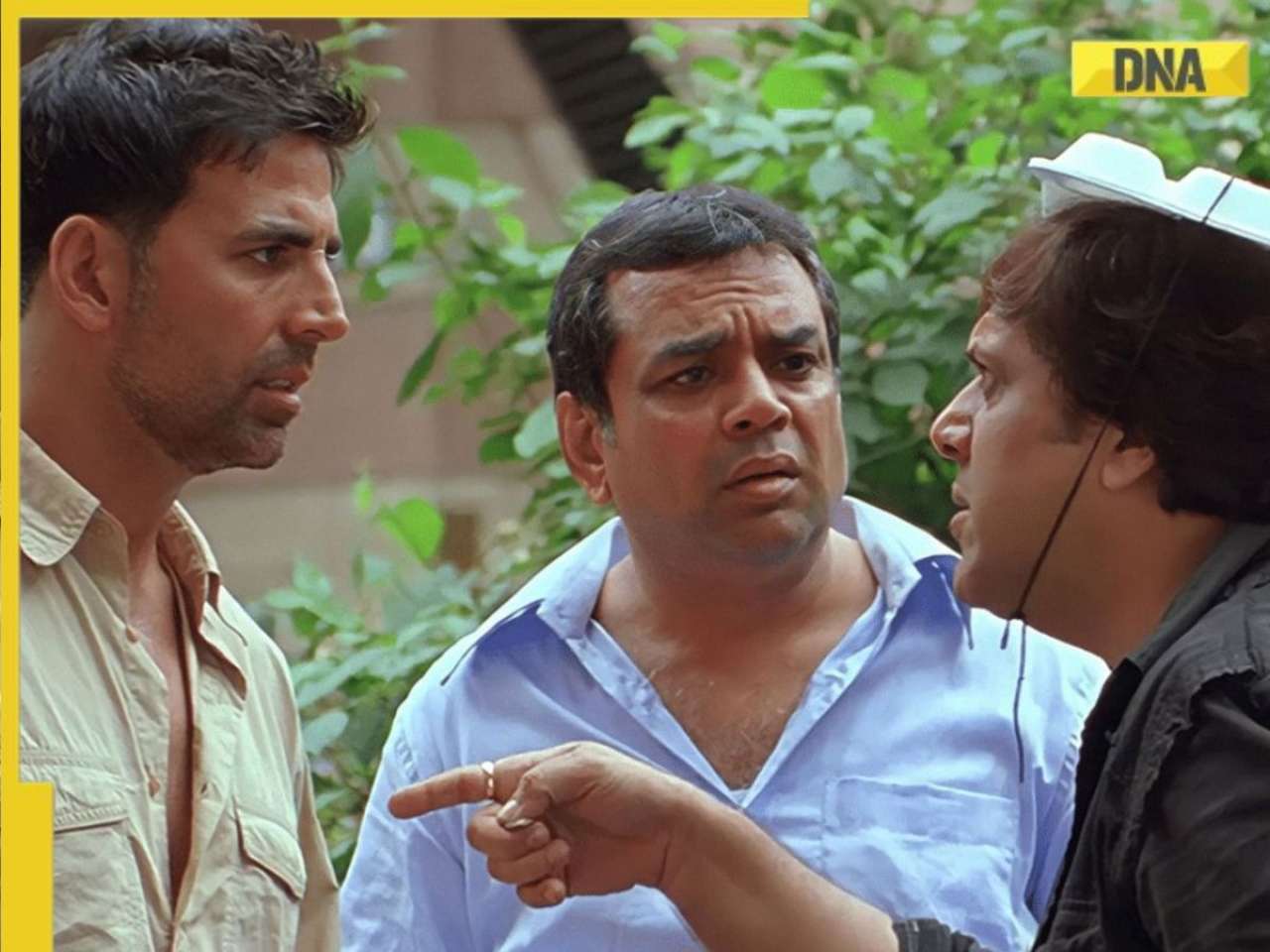- LATEST
- WEBSTORY
- TRENDING
MUMBAI
They leave no stone unturned
Thanks to them, you’ll no longer find loos in gothic corridors. Nor will you see exquisite 24-carat gold work hidden behind plaster facades.
TRENDING NOW
Thanks to them, you’ll no longer find loos in gothic corridors. Nor will you see exquisite 24-carat gold work hidden behind plaster facades. Kareena N. Gianani and Radhika Raj meet the makeover artists who are taking years off some of Mumbai’s oldest buildings
Gothic revival
A decade ago, a walk down the aisle of St Thomas Cathedral in Fort wouldn’t have been a treat for sore eyes. It would have been an eyesore because of the exposed wiring, water leakage, missing columns et al. Today, the cathedral is picture perfect. No wonder architect and conservationist Brinda Somaya is happy.
While restoration projects like Cathedral and John Cannon School, NRK House and the recent TCS House have brought her critical acclaim, it is the restoration of St Thomas Cathedral that bagged the UNESCO Asia-Pacific Heritage Award in 2004.
“Conservation needs a lot of research. There’s so much history you need to know, century-old styles to be mastered and materials to be arranged that were in use decades ago. Then you have to remove all those reckless additions to the structures through the decades and you will know why restoration takes years to complete.” When Somaya first visited the cathedral, she saw many glaring signs of insensitive intervention.
“Gothic corridors in the school had latrines and filthy bathroom tiles. Columns in Porbunder stone with intricate carvings were damaged beyond recognition. The challenge was to upgrade the buildings without disrupting the functioning of the school,” she says.
When restoring history, Somaya sticks to a few golden rules: Rummage through every historical evidence on the structure, document every phase for future reference and be very, very patient. “Conservation is full of surprises — you never know what you are going to get. At the school, we found exquisite 18th century stained glass paintings which had been, outrageously, covered with plaster.”
It didn’t stop there. During the church’s restoration, Somaya stumbled upon an old photograph and was shocked to find that the church had a sloping roof in 1865 instead of the flat, concrete roof that was later built in 1921. “The roof was built in neo-gothic style and was worth fighting for. I gathered all visual proof and spent a lot of time finding architectural remains of a sloping roof. Only then could I convince the authorities — bringing down the concrete roof is risky. We spread nets below it to prevent damage to the church.”
On conservation
“I believe every architect must take up conservation — even those not armed with a degree,” she says. No two heritage buildings are restored the same way, she adds, and there lies the need for specialists. “A conservation architect does true justice to a structure only when he ropes in experts — stained glass artists, structural engineers and others. I never claim to know it all.”
Towering heights
In 1997, conservation architect Vikas Dilawari spent most of his time at Rajabai Tower. “It was my second home.” Dilawari was overseeing the restoration of the structure, a 9-to-5 job that had him arranging meetings with contractors, overseeing masons and instructing electricians. The project had many conservation firsts.
“We restored 2500 sq feet of stained glass which was a lost art at that time. Also, finding trained craftsmen was impossible and English experts were flown in for 100 weeks to supervise the exercise.” The Brits raised eyebrows at the bamboo scaffolding he was using and suggested steel instead, something that had never been done before in Mumbai.
Dilawari thinks the profession has now changed beyond recognition. “A conservation architect’s profile is very different now. Even in the 80s, conservation was not a top-of-the-mind issue for people. I remember during my college days, we were assigned a project on Crawford Market. Everyone except me proposed its demolition and reconstruction. Where the rest saw shabby corridors and broken windows, I noticed the wooden flooring and intricate mouldings.”
Dilawari lost the top score to the guys who had thought of bringing down the heritage building — something unimaginable today. He has come a long way and among the structures he has transformed are the Army Navy building, Bhaudaji Lad Museum, American Express Bank building, Bai Jejebai Parsi Charitable Institution (BJPCI) and the BMC hall. With the BMC hall, Dilawari literally struck gold. “We found gold leaf gildings on the stone and woodwork and rare stencil paintings covered with plaster. It’s clear that previous architects had scooped layers off heritage buildings or just coated them over.”
On conservation
“Sometimes, structures are meddled with too much in the name of conservation. We need a light hand,” says Dilawari. “Conservation is no different from treating a patient. You keep amputation as the last resort.” If a restorer must make major changes, he says, the unwritten rule is to make them reversible.
On the waterfront
Driving down the plush Walkeshwar streets, one can easily miss the dreary lane that leads to Banganga — the 8th century sweet water tank which is now a popular tourist spot. But not everyone knows that in 1984, the BMC was all set to turn it into a playground. It was architect and urban designer Harshad Bhatia who stepped in to save this relic. He prepared a detailed report on the heritage value and conservation needs of the tank and its environs.
Bhatia’s proposal went beyond conserving just the tank. “I thought what would restoring the tank achieve? Walkeshwar is one the most sought-after areas in Mumbai. The tank could easily be usurped by builders.” So he came up with a plan. He realised that roping in citizens and making the tank a part of their lives would ensure that no one ever encroached on it again. “Conservation is pointless without local participation,” he says. The Banganga Festival was born from of this chain of thought. The popular two-day music festival now funds the tank’s maintenance. And it has become famous world over.
Bhatia’s work on the 1842 AD Rameshwar Temple adjacent to Banganga has been widely appreciated. “I found the temple in a
horrible state with chunks of carvings missing, exposing the bricks underneath.” Bhatia found traces of the original carvings, made moulds of the same and cautiously replicated the material and design. “It turned out well — we maintained its authenticity and made it waterproof so it could survive the years ahead.”
On conservation
Bhatia believes in looking at the bigger picture. He calls himself an ‘urban conservationist’ rather than a conservation architect. “It is important for a conservation architect to understand the dynamics of the area, the city and urban constraints before restoring a heritage structure.
“He must look beyond nitty-gritties and make it relevant for the present and future generations. For instance, Banganga’s conservation also means addressing water supply, drainage and electricity in the area for the benefit of people living there.”
Hall of fame
Variety is the what keeps this lady going. Mani Bhavan, Horniman Circle, Khotachiwadi and the Mahalaxmi precinct — all bear this conservation architect’s signature style. So do Elphinstone College, JJ School of Architecture and the Mumbai University convocation hall, which have won the UNESCO Asia-Pacific Heritage Awards.
“Restoring Mani Bhavan brought back my first-ever lesson in conservation architecture — to maintain authenticity of material, structure and spirit. No matter what, I try and respect the inherent truth of a heritage structure.”
Lambah went the swadeshi way for Mani Bhavan. With the help of Gandhi’s old photographs, she retained the wooden furniture with worn-out edges. “In one photograph, we noticed coloured chequered tiles in the background and ordered only Bharat tiles (tiles made during the swadeshi movement) to get that look.” Few are aware that Gandhi slept in a humble tent on Mani Bhavan’s roof. Lambah made block print’s of the tent’s motifs and recreated the era.
The Convocation Hall was a different ballgame. Lambah found it difficult to believe that the Hall not only had bad acoustics but was a health hazard as well. “The roof of the hall was made of asbestos fibre to make it soundproof. In spite of the risk involved, the workers did a brilliant job of replacing it with cellulose fibre. We also found holes on the roof made in 1869 for chandeliers and gas pipes.” Lambah conserved the Convocation Hall with the best Minton tiles and gold leaf gilding for which she roped in award-winning Rajasthani artisans. She also sourced the best stone from all over the country — the hall has Porbunder stone, Mysore serpentine stone and sandstone from Dhangadra.
On conservation
Lambah is clear that she belongs to no strict school of thought when it comes to conservation. “No two heritage buildings are the same. It doesn’t work if you have a fixed philosophy — the structure dictates its own. You must know when to step down and stop.”








)
)
)
)
)
)
)
)
)
)
)
)
)
)
)





























































